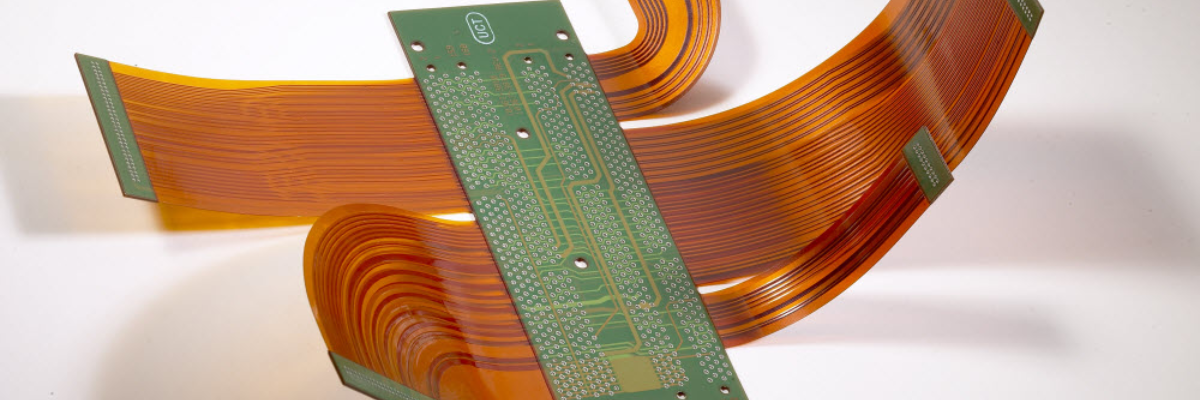With rising complexities pertaining to the functionality and features of electronic devices and their shrinking size and flexibility, a 10-layer PCB stack-up is often preferred by designers to meet various complex criteria such as placement of multiple and sensitive components, signal and power integrity, routing of wires, EMI mitigation, a robust power plane management, and more. A multilayered stack-up, such as a 10-layer PCBA, helps designers better utilize signal layers for routing and match the length of high-speed signals. Multilayered rigid-flex PCBs find use in high-frequency applications. This post discusses a 10-layer rigid-flex PCBA at length.
Basic Design of a 10-layer Rigid-Flex PCB
A 10-layer rigid-flex PCB stack-up comprises four flex boards and six rigid boards. The topmost and bottommost are silkscreen layers. The second and second last are solder mask layers. The actual layer one is the third one, which is the topmost signal layer followed by a prepreg insulator. The fourth layer is an inner conductor or plane layer, followed by core insulator. The third last or the actual 10th layer is an outer conductor signal layer. All the layers in between combine GND-plane, power plane, and signal layers with prepreg or core insulators. So, while the actual layers are 10, the silkscreen and solder layers are additional ones. This forms the crux of a 10-layer PCB. FR4 + Pl, polyimide, PE, and polyester are some of the most commonly used materials or substrates, and generally these boards have a thickness of around 1.6mm to 3mm for rigid boards and around 0.2mm for flexible boards. The mix of rigid and flexible boards allows the required bendability, meets shape-related complexities, confinement in tight spaces, as well as structural stability. This also facilitates reduced weight of the PCBA and hence, that of the device.
Different 10-Layer Stack-up Considerations
The signal layers, power planes, and GND planes in a 10-layer rigid-flex PCB are used for different purposes and vary based on applications. Here are some pointers.
- Role of Signal Layer: The signal layers help route the electrical connection among components on the board, differential pairs, and high-speed signals. High-power and high-frequency applications require a greater number of signal layers than those with a high pin count and complex BGAs.
- Role of GND Plane Layer: This layer offers a reference plan for signal layer and a low-impedance return path for signals. It shields the signal layer, reducing noise and reflection. It also helps improve the thermal performance through heat dissipation. The signal layers have circuits and high impedance traces, and hence, need to be placed close to GND planes to maintain signal integrity.
- Role of Power Plant Layer: This layer also offers a reference plan for signal layer. It improves the current carrying capacity of the signals, and offers a quiet and stable power supply, improving the board performance.
- Dielectric Constant: A material with a good dielectric constant must be selected as a substrate as it determines the speed at which the circuit works. The dielectric constant is the capacity of a material to retain electric power in the field. A good dielectric constant helps signals travel fast through the circuit board and positively impacts the impedance of PCB traces.
- Loss tangent: This is an essential factor also known as dissipation factor. This determines the quantity of energy converted into heat in the dielectric material every time an electric field is applied. This helps reduce signal losses
Manufacturing a 10-layer rigid-flex PCB requires precise fabrication techniques, drilling processes, and more along with sophisticated equipment and expertise. Do you plan to upgrade your electronic product or launch a new one? If yes, you may require a 10-layer rigid-flex PCBA stack-up with an application-specific design. Ensure you partner with a reliable and experienced PCB assembly services provider to incorporate a multilayered PCBA in your product, while considering every minute detail. Also, ensure your PCB assembly service provider has dealt with the PCBA requirements of clients across sectors and offers custom options. Rigiflex offers customized and end-to-end PCBA solutions with multilayer PCB stack-ups. They have been in the market for more than two decades. If you want to share your requirements or need further information regarding their 10-layer rigid-flex PCB expertise, contact us today.

